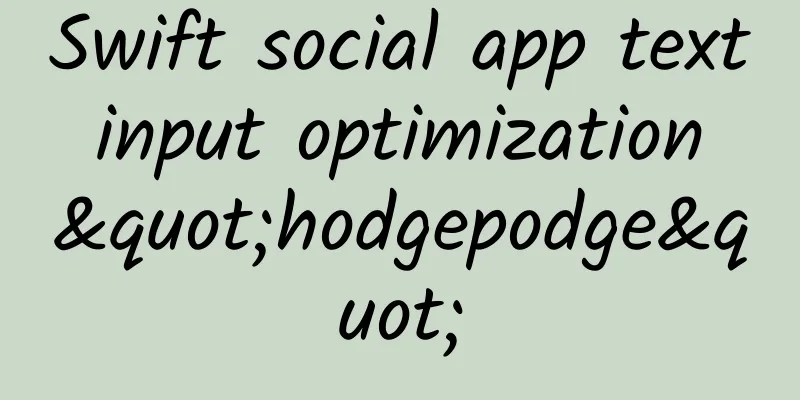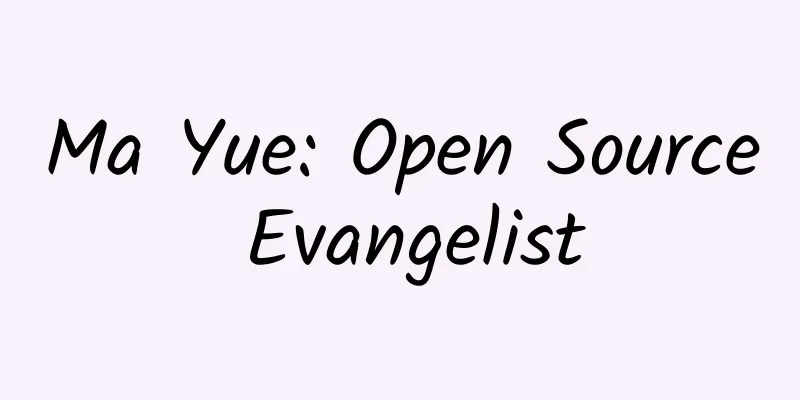Swift social app text input optimization "hodgepodge"

|
1. Input-related optimization issues In most applications, there is a need for input. Faced with many users, their ideas are different, and the text content they input is also strange. Faced with different inputs, how can we optimize the input experience? Here we summarize the input-related issues, mainly as follows: 2. The input box moves with the keyboard There are two ways to build the interface, code or storyboard/xib. These two methods are the same in handling keyboard movement. Here we recommend using a packaged third-party framework: TPKeyboardAvoiding 1. Code processing method rootView uses TPKeyboardAvoidingScrollView in the TPKeyboardAvoiding framework to initialize. For example, the login interface, LoginViewController (inherited from UIViewController), the processing method is as follows:
The code constructs the interface and realizes that the input box moves with the keyboard. The class TPKeyboardAvoidingScrollView needs to be processed as the root view. 2. Storyboard/xib processing method Storyboard/xib is easier to handle, just set the rootView of the view controller to TPKeyboardAvoidingScrollView (1) Select the root view of the controller (2) Setting the default instantiation class #p# 3. Commonly used basic settings 1. Common basic settings Including opening the keyboard, closing the keyboard, specifying the keyboard input type, and specifying the type of the return button, such as the following code
2. Filter input through a proxy Through the UITextField/UITextView proxy, you can control the input more accurately, for example: filter specified characters, prohibit input when the number of characters exceeds the limit, etc. (1) The UITextField code is as follows:
(2) The UITextView code is as follows:
UITextField/UITextView can detect the user input in real time through the proxy method, which is convenient for input constraints. For example, when the input exceeds 10 characters, the user is prohibited from inputting. However, this experience is not good and it is recommended not to use it. #p# 4. Response programming processing, accurate prompt information 1. How to optimize The constraints of input information are generally to directly prompt the rules to the user, for example: the input of user nicknames in social networking: After the user clicks the OK button, the validity of the input is checked and the user is prompted with information in the form of a dialog box (or HUD) The above processing method is very common and can meet basic needs. However, we no longer use the above design for the following two reasons: In the actual development process, the prompt information is reduced to When the user actively enters characters such as spaces, carriage returns, punctuation marks, or exceeds the length, the system will automatically prompt the user for information. As shown in the following figure, there is no input, the OK button is disabled, and only very little useful information is prompted. The input is legal, the confirmation button is enabled If the input is illegal, the error is highlighted and the OK button is disabled. 2. Code implementation Using the third-party framework ReactiveCocoa, first implement the function of the prompt below and the picture on the right when the user inputs (do not use the third-party framework, you can implement it yourself through the proxy)
The following functions are implemented: According to the legality of the input, set the enabled property of the button. This step requires downloading the RAC syntax support file. More detailed introduction to Swift support for ReactiveCocoa
#p# 5. Chinese processing method When Chinese characters are input, the above word count check is inaccurate. For example, when 6 characters of "I love Chinese culture" are input through the input method, the number of characters in self.nickTextField.text is 23, and the prompt information is incorrect. UITextView/UITextFiled has a markedTextRange property, which is used to identify whether there is currently selected text (when there is selected text, it is the unfinished input state in the above figure). This principle is used to solve similar problems such as Chinese
VI. Conclusion Input is the most time-consuming operation in mobile apps. If it is not handled properly, it is easy to lose users. Here are some points to summarize: |
<<: On Chance and Skill in Game Design
>>: Is Android controlled by Google not a good Android?
Recommend
iOS 9 multitasking split screen tips
iOS 9 Multitasking Overview The most eye-catching...
Top 10 scientific breakthroughs of 2021, AI is on the list
On November 17, 2021, Science magazine released t...
If you want to lose 10 pounds before summer, start eating like this now!
As the temperature rises day by day, everyone'...
Server Hosting Transfer Notes
Server Hosting Transfer Notes 1. Debug website pr...
Wake up to a hardened skin from a hot water bottle? Beware of the "low temperature killer"!
Have you ever relied on the warmth of a hot water...
Volvo XC60 Midnight Black is priced at 523,900 yuan and is equipped with T8 plug-in hybrid and four-wheel drive
Netease Auto reported on December 1st that today,...
Eleven Trends Predicted for New Consumer Brands in 2022
The collective rise of new consumer brands is und...
Methodology for practical operation of short video
As usual, I have summarized some practical experi...
How to do content marketing well and let users come to you!
When making a product, content should be added to...
Inner Mongolia, Hebei and other 8 provinces and cities will face blowing sand or dust! Strong sandstorms are coming, please keep this defense manual
The Central Meteorological Observatory continued ...
Apple launches new iPod Touch: starting at 1,495 yuan, is it worth buying?
On July 15, Apple's online store showed that ...
The underlying logic of fission growth
Nowadays, many companies use fission to grow thei...
2018 Borgward BX5 real shot at Guangzhou Auto Show: Can it overtake BBA by parking it opposite the Land Rover booth?
Borgward can be said to be a rather peculiar bran...
Urgent reminder! For one month, these people should strictly wear protective masks when going out
Have you noticed that when walking on the streets...
How to buy the Kuaishou popularity agreement, or where to buy popularity?
Professional Douyin and Kuaishou likes-boosting p...









